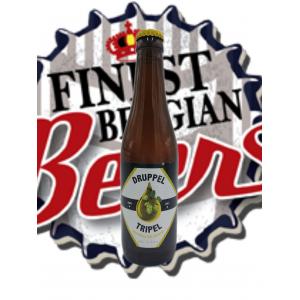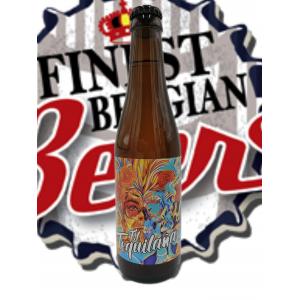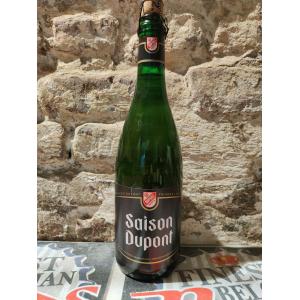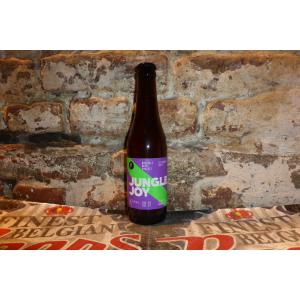History:
Typical tourists
1445. That’s a long time ago. Belgium was still part of the Netherlands and the Netherlands still had plenty of colonies. And as true tourists the Dutch often brought wonderful and odd things over from their excursions abroad. So it came to pass that exotic spices became readily available in our parts. All to the benefit of our beloved monks.
Masterchefs
Historical sources tell us that the first wheat beer was incredibly sour. That is until the Hoegaarden monks started experimenting with orange peel and coriander from the colony Curaçao: a divine discovery that led to the world famous Hoegaarden recipe. Had Masterchef been around back then, the judges would surely have called it a masterpiece.
One big brewery
Wheat beer caused a bit of a stir in Hoegaarden. In all honesty, Hoegaarden became one big brewery in the 18th century. In 1709, the village had no less than 12 breweries. In 1726, that number had increased to 36. Oh and let’s not forget the 110 malt houses.
A tall glass of wheat beer
The last brewery in Hoegaarden, Tomsin, closed shop in 1957. Soon after, in 1965, the villagers decided to take action to preserve the original recipe. Milkman Pierre Celis took the bull by the horns and started brewing up a batch in his milk shed, using only a copper boiler.
He quickly expanded his operation and moved into a bigger building – ‘De Kluis’ (The Vault) – a subtle nod to the monks. By 1985 the nod was no longer subtle as he was making more than 75.000 hectolitres per year. Just as he was about to start exporting to the United States, a rather large fire flattened his dreams (and the beer). The brewery was destroyed.
One hell of a heritage
The original Belgian wheat beer could and would not be lost. Today, 9 out of 10 wheat beers sold in Belgium are from Hoegaarden. Meanwhile, the unique flavour is being appreciated and awarded throughout Europe, North America, Australia, Singapore and China. How they pronounce the name in other parts of the world is another story. One we won’t tell.
Myths & Legend
500 years of brewing history is plenty of time for myths and legends to surface. Some of these are clearly fabricated, others might be true. Either way, the glass is always half full.
Tasty medicine
Doctors either enjoyed drinking Hoegaarden themselves or they had shares in a brewery; the fact remains that in the 17th and 18th century, wheat beer treatments were prescribed to people with a vitamin deficiency. The idea is that wheat beer is full of yeast and a source of vitamin B and chrome. The reality is that this is in fact a myth. And a jolly good excuse.
Jam-packed with flavour!
Hoegaarden is tasty, that much is obvious. However, that’s not what the ‘jam’ refers to here. Legend has it that the shape of the glass is derived from jam jars. Because what do you do when there are no clean glasses left in the village? That’s right, you drink from jam jars. The taste of the bits of fruit left in the jars was a bonus, so they kept using them.
Go home!
Others say they used a giant wrench to pry the hexagonal beer glasses from the grubby paws of pub enthusiasts that refused to go home.
Chill out
Nobody really knows for sure how the glass got its shape. One thing is certain: the hexagonal shape and thickness of the glass keep the wheat beer chilled. Ideal for those who enjoy a cold Hoegaarden on a warm summer day. And who doesn’t enjoy that?
Child’s play
Some 500 years ago, the brewers found an orphan. And when Emperor Charles ordered the brewers to raise the child, they needed to give him a name. So they put on their thinking caps and named him Claes (after the brewery ‘De Kluis’). Pronounced ‘Klaas’ by the locals.
The breweries in Hoegaarden took turns taking care of him. Like a spy he learned the secrets of each brewery as well as all the tricks of the wheat beer trade. And Claes could taste beer with the best of them. Four times a year, at the start of each season, he drank 8 wheat beers in 8 different cafés on 8 consecutive days. How he got home is a different story entirely.
From orphan to the best wheat beer brewer of the country, that’s Claes’s story in a nutshell. He became 100 years old, citing Hoegaarden’s wheat beer as the reason for his long life. He even asked to be buried in a beer barrel, probably because he no longer fit into a regular coffin. To this day, his statue smiles down on the courtyard of the brewery.
Article number: FBB20680



